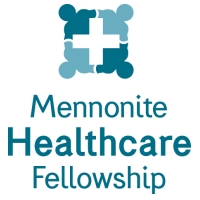Mennonite Health Journal
Articles on the intersection of faith and health
Poverty and Restorative Strategies
Murray Nickel, MD
from Mennonite Health Journal, Volume 14, No. 3, October 2012
If you encountered someone caught in a car wreck, no doubt you would try to save the person regardless of the risk. Isn’t that why we donate and get involved in overseas projects? How can we not help when we know that our brothers and sisters around the world are suffering? Besides, it’s our compassionate duty as followers of Jesus…
That’s where it would end if poverty was as simple as a car wreck. But it isn’t. Poverty is more like a cancer–chronic and messy. Solutions are far less clear. Jumping in to save the day does not produce the expected results. Happy-ever-after stories just don’t happen.
I’ve heard it said, “It’s a waste of time. Hasn’t our aid done enough harm in the last fifty years? Leave them alone!”
- When has a concrete school building with a nice roof and solar panel lighting made anyone happier than the crooked overcrowded bamboo structure with a grass roof?
- Once the batteries wear out and the building deteriorates, it tends to lead to, “Please come back and give us more!”
- And how does a diesel tractor make life any better for the farmer? Once it breaks down or needs a part, then what? “Come back, we need another one. The first one doesn’t work anymore.”
Maybe it’s time we stop arrogantly meddling in the affairs of the poor. In the words of Dambisa Moyo:
The notion that aid can alleviate systemic poverty, and has done so, is a myth. Millions in Africa are poorer today because of aid; misery and poverty have not ended but have increased. Aid has been, and continues to be, an unmitigated political, economic and humanitarian disaster for most parts of the developing world. (Moyo, Dead Aid 2009, pg xix)
But is it not equally arrogant to stand by idly? Is living by the motto “out of sight, out of mind” the Christian way? We can’t ignore our part in a global community. Whether we are sainthood-aspiring or self-absorbed, people are still suffering with poverty. To make a real difference, we may have to change our way of thinking about poverty.
Poverty might be a lack of something; however, providing for that lack isn’t going to eradicate the poverty. It goes much deeper. Jesus came to change our way of thinking:
“The Spirit of the Lord is on me,
because he has anointed me
to proclaim good news to the poor.
He has sent me to proclaim freedom for the prisoners
and recovery of sight for the blind,
to set the oppressed free,
to proclaim the year of the Lord’s favour.” (Luke 4:18-19 NIV)
Jesus claimed he had come to restore a Godly order. The community suffered from the disease of poverty because of a marred identity. All the Jewish rituals and ceremonies could not restore that balance. Rather, Jesus said that he was needed to restore the community to what it was intended to be.
If we believe we have the solutions to correct the brokenness of poverty we are only deluding ourselves. William Easterly highlights the differences between planners and searchers.
“A planner thinks he already knows the answers…a searcher believes only insiders have enough knowledge to find solutions, and that most solutions must be home-grown.” (Easterly, White Man’s Burden 2006, pg 6).
Our usual approach of coming to save the day isn’t going to work, but neither is ignoring the problem. Addressing poverty isn’t only about justice. It’s also about mercy. It’s about seeing the possibilities. It’s about recognizing the image of God in the poor. Sure, the poor themselves don’t always know what is needed and fall back on the traditional handouts. But what if we were to catch the rhythms, find the things that make people tick? What if we were to discover their passions and humbly acknowledge their value?
The International Mennonite Health Association (IMHA) has chosen two restorative strategies that we hope will help nurture Christ-like balance in the community.
- The first is to work through grassroots partners who are proven visionaries and initiators. The cultural divide creates a significant challenge in overseas work. We feel the best way to bridge this gap is to build give-and-take relationships with individuals and groups on the ground who will be IMHA partners. We are now creating a project vehicle that will provide an easy-to-understand mechanism to facilitate this type of relationship-building. In this way we hope to effectively tap into the energy and vision of people in the field.
- The second strategy is to encourage the development of initiators and visionaries in communities marred by poverty. We believe that providing financial resources in the form of training bursaries is a simple but effective way to build future leadership.
We are servants, trying to follow in the footsteps of Christ. Restoring communities into the image of God is not within our human capacity. Yet restoration is what is needed to address poverty. As we implement these two strategies, I believe we can be a part of the restorative work of the church at large, while understanding that it is not by human plans but rather by the Holy Spirit that transformation takes place.
About the author
 Murray Nickel, MD, is President of International Mennonite Health Association (IMHA) and an emergency physician living in Abbotsford, British Columbia, just outside of Vancouver. He spent six years in Congo in association with Mennonite Brethren Mission and now travels back and forth between Congo and Canada two or three times a year. He has a special interest in human development and transformation in the context of the poverty.
Murray Nickel, MD, is President of International Mennonite Health Association (IMHA) and an emergency physician living in Abbotsford, British Columbia, just outside of Vancouver. He spent six years in Congo in association with Mennonite Brethren Mission and now travels back and forth between Congo and Canada two or three times a year. He has a special interest in human development and transformation in the context of the poverty.

